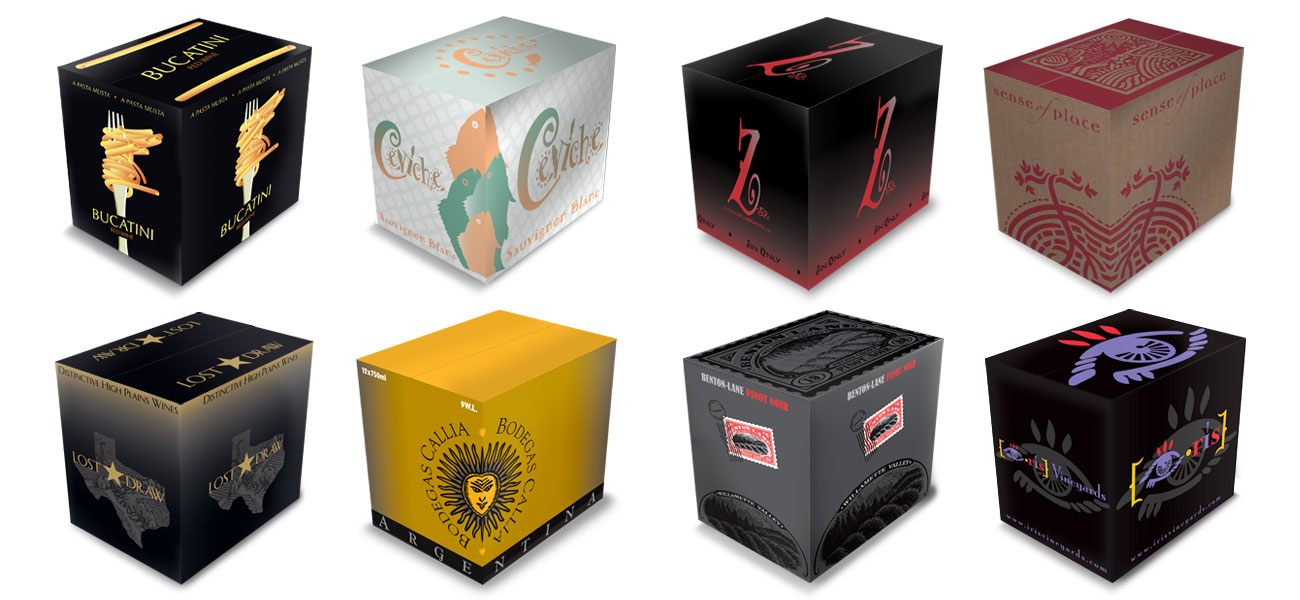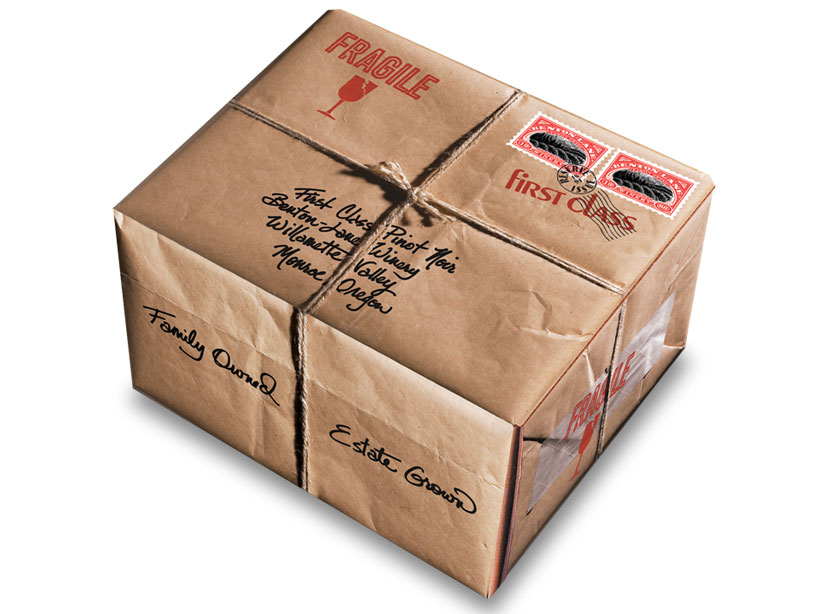
25 Jun The Case for a Wine Case!
Late last year I was asked to participate in a “Wines & Vines” article by Jane Firstenfeld. Jane covers the “packaging beat” as she calls it. I am flattered to be considered one of her “go-to” sources for what’s going on in wine package design.
This time Jane’s subject was wine case design. She sent me a list of questions that required a little thought. Here is a sampling of my response:
More than half my new branding assignments will include 12 x 750 ml shippers. That said, many clients who did not initially ask for a custom shipper have come back to me and requested a compatible design to support their bottle package design. Retailers have done their share by floor stacking wines.
An attractive case design is like an outdoor billboard. Customers are going to see the case a lot easier (& sooner) than a face label. This is particularly true in a crowded field, which describes most retail settings.
There is also the logic of expressing a new package design on a wine case. It just makes sense. It creates design continuity, which helps support the new branding. It also creates a definite point-of-difference for those vintners who have no case design at all. Blank corrugated cases start looking pretty insignificant (and cheap) when placed next to a well-designed case.
How much does a “fancy” box add to costs?
Fancy can be expressed in many ways. Obviously, the more colors, the greater the cost. It’s important to point out that glass (bottle) vendors play an important part in carton pricing. Glass companies include case printing in their respective cost structure. Since they have to deliver their product (glass) in a shipper, they often include printed cases in with glass pricing. The “printed” case price is added to the overall glass order. These printed cases have to be manufactured in advance so the bottles can be shipped to each respective winery or bottling line.
 Premium Wine Case Design:
Premium Wine Case Design:
Reserve wines with price points $75.00 and above get special attention. Their packaging is almost always executed at a higher level than estate wines. Since they are significantly more expensive, shipping in a standard 750 ml case wouldn’t do. Often premium wines are packed in high quality six bottle lay-down cases. Economically, it is a lot easier to sell six bottles of expensive wine than 12. The six bottle cases differentiate the wine and provide an excellent vehicle to draw attention to the rare wine inside the box. Benton-Lane’s First Class Pinot Noir is an excellent example. I designed the custom case to look like a wrapped parcel. It’s hard to miss.
How do cases affect in-store sales?
I think it all comes down to the retailer. Higher price point wines are most likely going to occupy a shelf facing along side other competitive wines of the same varietal. Case stacked wines are often special promotions where added visibility is important. Therefore, a nice case design will attract more attention. Obviously, Beverages & More is going to have a different strategy than a Dean & DeLuca.
Read Jane ‘s excellent story, “Make the Most of Shipping Cases,” which includes feedback from Costco’s wine buyers and other retailers as well as package designers who are battling for attention at the retail level and in winery tasting rooms.
